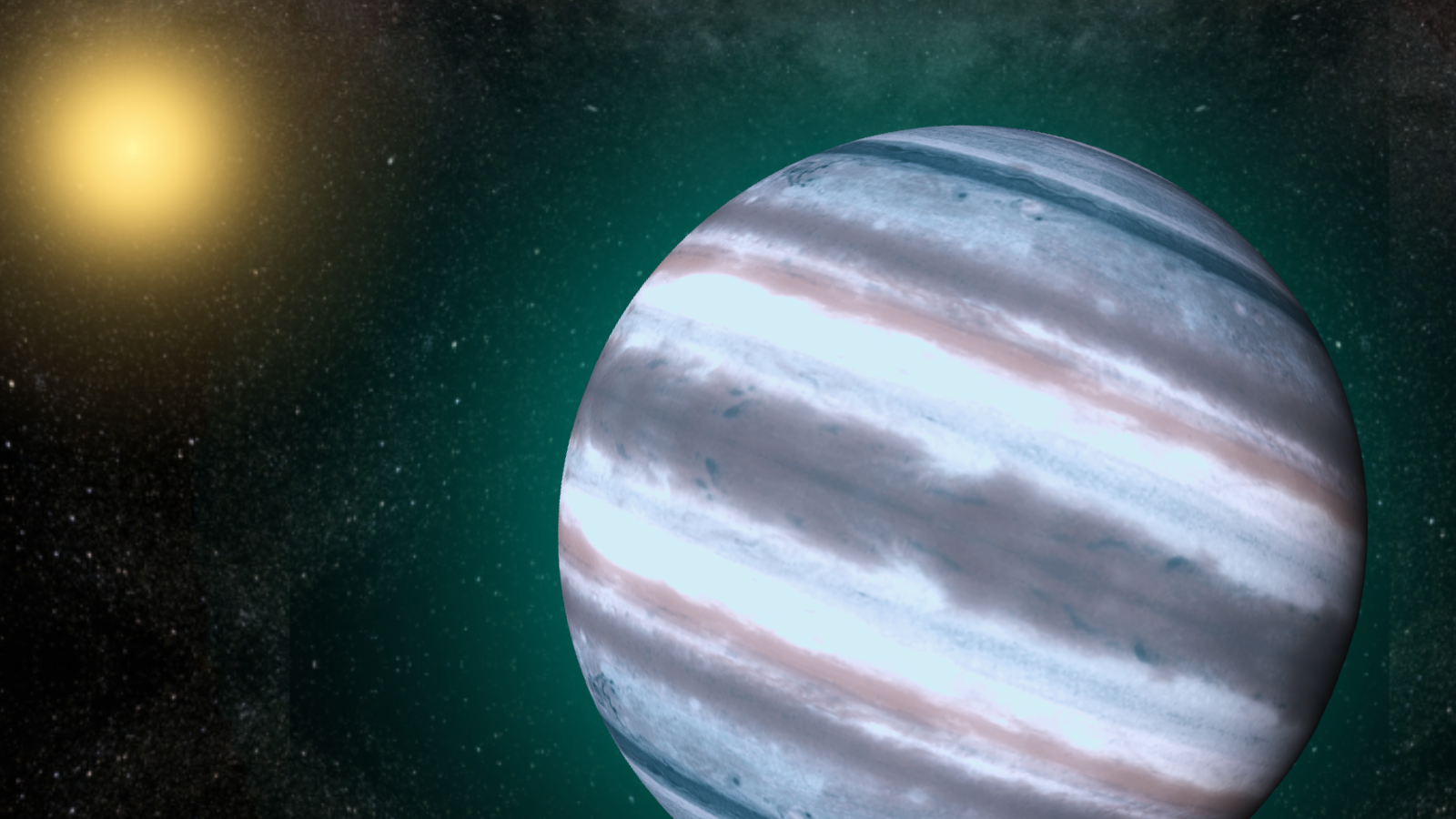
During the mid-to-late evening hours tonight (Nov. 21), if you look low toward the east-northeast sky, you will see a waning gibbous moon; 82-percent illuminated and shining prominently above and to the moon's left will be a brilliant, silvery non-twinkling "star."
In reality, that star is not a star at all, but the largest planet in our solar system: Jupiter.
The distance between the moon and Jupiter will be just a little over 5 degrees. Your clenched fist held at arm's length is equal to approximately 10 degrees, so the gap separating this celestial pair will appear to be equal to roughly half a fist.
Jupiter is currently the best observer's planet and will remain so all winter and into next spring. Look for it glimmering balefully just above the eastern horizon by 8 p.m. local time. But sharp telescopic views are seldom possible until it is about 30 degrees above the horizon, given the typical turbulent state of Earth's atmosphere. Jupiter will take about another 2.5 hours to reach 30 degrees altitude, which to some is the dividing line between objects that are "low" and "well placed." Half the area of the hemispherical sky dome is below 30 degrees altitude (or three fists).
If you do check out Jupiter with a small telescope, you'll initially see three of its four Galilean satellites, with Ganymede on one side of Jupiter and Io and Callisto on the other. As the night wears on, the fourth satellite, Europa, will emerge from behind Jupiter at 11:46 p.m. EST (8:46 p.m. PST). About 2.5 hours later, Europa and Ganymede will appear to pass each other while going in opposite directions. The ever-changing positions of the satellites relative to each other are always fun to watch.
Jupiter is currently situated against the stars of Gemini, the Twins, where the ecliptic — the apparent path of the sun, moon and planets — comes farthest north, at +23 degrees declination. This is fortunate for Northern Hemisphere observers, since the farther north a planet is, the more time it will spend above the horizon and the higher it will stand above the southern horizon at the midpoint of its path across the sky. For those living in the southern United States, when Jupiter crosses the meridian in the early morning hours, it is not far from the point directly overhead (the zenith).
Editor's note: If you snap a photo of Jupiter or any other amazing night sky view and you'd like to share for a possible story or image gallery, please contact managing editor Tariq Malik at spacephotos@space.com.
Breaking space news, the latest updates on rocket launches, skywatching events and more!
Joe Rao serves as an instructor and guest lecturer at New York's Hayden Planetarium. He writes about astronomy for Natural History magazine, the Farmer's Almanac and other publications, and he is also an on-camera meteorologist for News 12 Westchester, N.Y.
Join our Space Forums to keep talking space on the latest missions, night sky and more! And if you have a news tip, correction or comment, let us know at: community@space.com.

Joe Rao is Space.com's skywatching columnist, as well as a veteran meteorologist and eclipse chaser who also serves as an instructor and guest lecturer at New York's Hayden Planetarium. He writes about astronomy for Natural History magazine, Sky & Telescope and other publications. Joe is an 8-time Emmy-nominated meteorologist who served the Putnam Valley region of New York for over 21 years. You can find him on Twitter and YouTube tracking lunar and solar eclipses, meteor showers and more. To find out Joe's latest project, visit him on Twitter.
